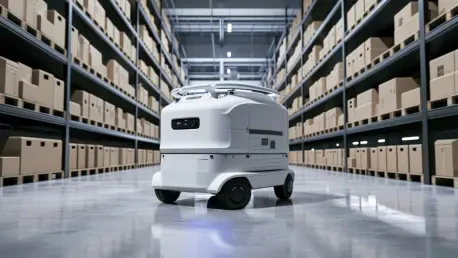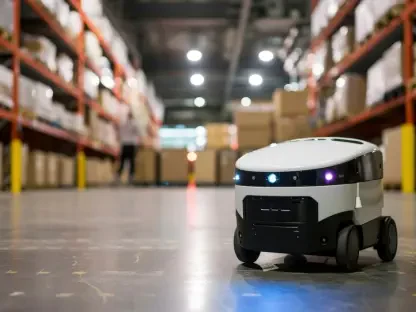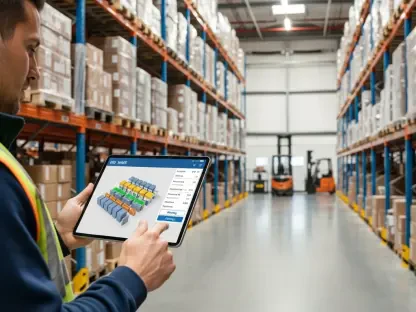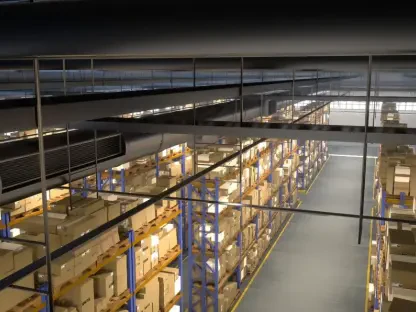In the bustling world of logistics where efficiency directly equates to profitability, one field experiencing rapid evolution is warehouse automation. The concept revolves around employing technology to streamline operations, reduce manual labor, and enhance productivity. This movement gained traction amid rising order volumes that outstripped conventional manual packing capacities. Notably, the UK-based logistics provider SW Group recently modernized its fulfillment operations by adopting tmWare’s Pack Pod module to effectively address these challenges. This review explores the journey, effects, and future outlook of such cutting-edge technologies in warehouse automation.
A Closer Look at Warehouse Automation Solutions
Warehouse automation technologies offer an array of solutions designed for efficient management of inventory and fulfillment processes. Core principles include automated systems for sorting, packing, and labeling, leveraging robotics and artificial intelligence to achieve accuracy and speed. These advancements have emerged from the need to handle increasingly complex supply chain dynamics and heightened consumer expectations for prompt service. Against the backdrop of modern logistics, warehouse automation represents a critical bridge to enhanced operational capabilities and competitiveness.
Key Features and Advancements
Automated Packing Systems
Automated packing systems stand out as a pivotal element in modern warehouse setups, enabling logistical firms to surpass the bottlenecks of manual labor. These systems increase the throughput of orders by incorporating processes such as automated order routing and barcode scanning for quality checks. Implementing an efficient packing system can significantly elevate order processing rates, as illustrated by the example of SW Group raising its packing efficiency by 40% with tmWare’s Pack Pod module. The integration allowed them to handle peaks during high-demand periods, maintaining customer satisfaction while managing inventory accurately.
Advanced Robotics and Artificial Intelligence
The deployment of advanced robotics and artificial intelligence in warehouse operations marks a transformative shift in how logistical functions are executed. Robots equipped with sophisticated AI algorithms handle tasks precisely, maintaining optimum performance levels without fatigue. The ability to process orders has improved markedly, with AI-driven systems making decisions in real-time and adapting swiftly to changes. This technological leap positions warehouses as smart environments capable of adapting to varying demands, resulting in improved service levels and operational savings.
Emerging Developments and Trends
The landscape of warehouse automation is continuously evolving, with recent developments showcasing more integrated and intelligent system capabilities. Technologies like machine learning and the Internet of Things (IoT) are paving the way for even smarter operational management. Companies are moving toward interconnected systems that offer comprehensive oversight of the supply chain. This trend suggests a shift from isolated automation systems to holistic solutions, offering businesses a seamless, synchronized way of managing their logistical operations.
Game-Changing Applications in Various Industries
Warehouse automation’s impact stretches across diverse sectors, from retail to manufacturing and logistics. In retail, automation allows for faster processing of online orders, catering to the e-commerce surge. Manufacturing firms benefit from optimized inventory management and reduced downtime. In logistics, automation facilitates end-to-end tracking and management, enhancing transparency and efficiency. Success stories such as that of SW Group underscore the technology’s versatility in various applications, adapting to unique industry needs and requirements.
Overcoming Challenges
The journey toward comprehensive warehouse automation is not without its hurdles. Firms face technical complexities in system deployment and integration, meeting regulatory standards, and market resistance due to perceived costs. Advanced systems require skilled personnel for maintenance and adaptation, often necessitating additional training investments. Despite these challenges, ongoing development efforts aim to simplify system use and reduce associated costs, making automation accessible to a broader user base.
Future Outlook
The future of warehouse automation appears promising, with expectations for continued innovation and adaptation. Potential breakthroughs in AI and robotics point to even more sophisticated systems that could revolutionize operational workflows. The anticipated integration of augmented reality and advanced data analytics could further refine the accuracy and efficiency of warehouse management. In the long term, automation may reshape logistics into a fully adaptive, real-time operational model, setting new benchmarks for industry performance and consumer service delivery.
Conclusion
In conclusion, warehouse automation technologies have significantly advanced the logistics sector, offering compelling solutions that drive efficiency and performance. SW Group’s success in incorporating tmWare’s Pack Pod module is a testament to the transformative power of innovation in supply chain management. As the technology progresses, firms that embrace automation will likely find themselves at the forefront of operational excellence, equipped to tackle ever-growing demands and complexities in the global logistics landscape. Such advancements promise continued evolution, setting the stage for future breakthroughs and offering a competitive edge to early adopters.









